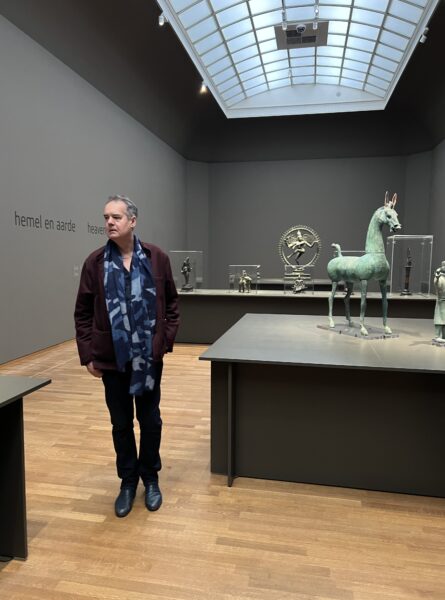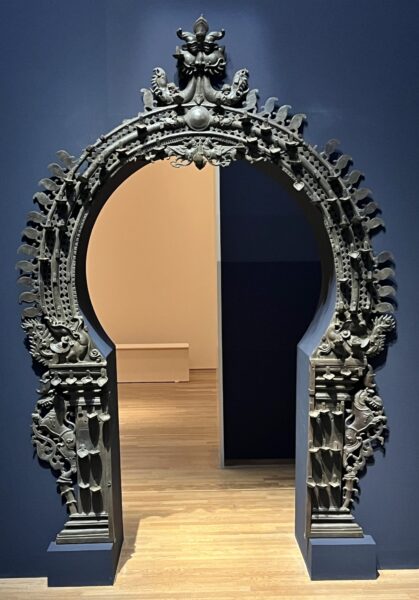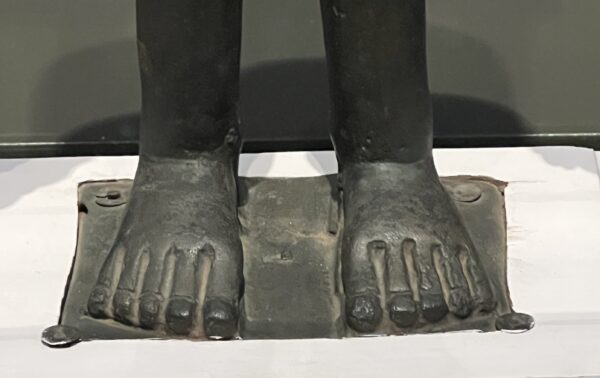The Asian Bronze Exhibition at the Rijksmuseum, Amsterdam
The Asian Bronze exhibition at the Rijksmuseum in Amsterdam, the Netherlands, (on until January 12, 2025) is majestic in every way. Partly sponsored by the London-based Bagri Foundation, the exhibition has drawn on 20 institutional collections from around the world to bring together some of the most beautiful bronzes ever cast in Asia.
The exhibition is spaciously presented and for the most part, visitors can walk entirely around each artwork – the objects are not lined up against walls for example, and so each piece can be fully analysed and appreciated from most angles. The lighting also is well thought out so that each piece is beautifully highlighted.
Nor are their lengthy descriptions, distracting videos, and childish montages: this is an exhibition for adults. If you want lengthy descriptions then buy the (excellent) catalogue.
Instead of being lost in a sea of over-designed stunts, each artwork is allowed to speak for itself, which is just as well, because each piece has a lot to say.
The simplicity of the installations allows the visitor to fully concentrate on each piece before moving on to its equally stunning neighbour.
The exhibition is a contrast to the cluttered mess of recent exhibitions at London’s British Museum and the Victoria & Albert Museum. The current Silk Roads exhibition at the former exemplifies the notion of clutter particularly. The exhibition has a lot to say and the notions it seeks to get across are complex, but at its inception, each department in the British Museum was asked what it could contribute to the exhibition and that approach shows – the exhibition includes a bit of everything. There is little starkness; more an exhibition done by committee.
The Asian Bronze exhibition at the Rijksmuseum is simply a pleasure to visit. One leaves feeling contemplative rather than harassed, and for those looking for more depth then the concise but excellent catalogue of the same name is well worth having. Like the exhibition, it is both monumental and economical, rather the pretentious.

Above: Each item is given the space it deserves.

Above: Yashoda with the infant Krishna, Tamil Nadu, early 12th century

Above: Standing adjacent to a model of a horse, China, circa 2nd-3rd century

Above: Avalokiteshvara, Central Java, 9th century

Above: Naga balustrade, Northeast Thailand, circa 1460-1490

Above: detail of an image of Brahma, Sindh Province, Pakistan, circa 6th-7th century

Above: Temple archway set with oil lamps, Tamil Nadu, India, dated 1863

Above: Jina, Bihar, India, circa 2nd-3rd century

Above: detail of the Jina’s feet (above), Bihar, India, circa 2nd-3rd century

Above: Ganesh, Tamil Nadu, India, 12th century

Above: Oil lamp, East Java, Indonesia, circa 14th-15th century

Above: Rhinoceros, Maharashtra, India, circa 2000BC-1500BC

Above: Peacock, Kanchanaburi Province, Thailand, circa 300BC-300AD

Above: standing next to Shiva Nataraja, |Tamil Nadu, India, circa 12th century

Above: The bull of Shiva, Saraburi Province, Thailand, circa 16th-17th century

Above: Vishnu, Kongunadu, India, circa 950 AD
______________
Receive our regular catalogues of new stock, provenanced from old UK collections & related sources.
See our entire catalogue of available items with full search function.
______________

